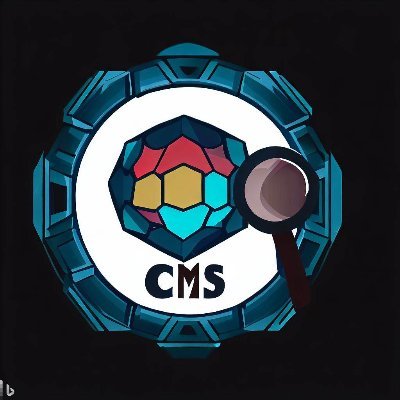UMA price
in USD

About UMA
Disclaimer
OKX does not provide investment or asset recommendations. You should carefully consider whether trading or holding digital assets is suitable for you in light of your financial condition. Please consult your legal/tax/investment professional for questions about your specific circumstances. For further details, please refer to our Terms of Use and Risk Warning. By using the third-party website ("TPW"), you accept that any use of the TPW will be subject to and governed by the terms of the TPW. Unless expressly stated in writing, OKX and its affiliates (“OKX”) are not in any way associated with the owner or operator of the TPW. You agree that OKX is not responsible or liable for any loss, damage and any other consequences arising from your use of the TPW. Please be aware that using a TPW may result in a loss or diminution of your assets. Product may not be available in all jurisdictions.
UMA’s price performance
UMA on socials






Guides

UMA on OKX Learn
UMA FAQ
UMA is an Ethereum-based protocol designed to facilitate the creation of synthetic assets and financial contracts. The protocol leverages the Optimistic Oracle network to ensure efficient and reliable data feeds. To secure the network, UMA utilizes native UMA tokens that adhere to the ERC-20 standards.
With UMA, anyone can create pegged synthetic assets and trade them across bridges, markets, and DApps. Additionally, the DAO-based approach makes everything trustless, while the ecosystem supports staking and incentivizes participants, including stakers and developers, with rewards.
You can easily buy UMA tokens on the OKX spot trading terminal with popular trading pairs like UMA/USDT.
You can also buy UMA with over 99 fiat currencies by selecting the "Express buy" option. Other popular crypto tokens, such as Bitcoin (BTC), Ethereum (ETH), Tether (USDT), and USD Coin (USDC), are also available.
You can also swap your existing cryptocurrencies, including Dogecoin (DOGE), Polygon (MATIC), and Chainlink (LINK), for UMA with zero fees and no price slippage by using OKX Convert.
To view the estimated real-time conversion prices between fiat currencies, such as the USD, EUR, GBP, and others, into UMA, visit the OKX Crypto Converter Calculator. OKX's high-liquidity crypto exchange ensures the best prices for your crypto purchases.
Dive deeper into UMA
Universal Market Access (UMA) is an Ethereum-compatible toolbox designed to enable users to create enforceable agreements, including project-specific smart contracts. While UMA excels in facilitating financial agreements, it is also compatible with a wide range of decentralized applications (DApps). UMA is referred to as a "decentralized truth machine" on its official website, emphasizing its role in ensuring transparency and trust within the decentralized ecosystem.
What is UMA?
UMA is a protocol specifically designed for creating programmable digital assets, enabling users to replicate traditional assets in a virtual blockchain-native form. This is achieved through an Optimistic Oracle setup, which handles real-world aspects such as prices by sourcing off-chain data. The integration of these Oracles ensures a trustless and decentralized ecosystem. In addition to its financial applications, UMA offers a wide range of Web3 apps, including prediction markets, insurance bridges, and customizable decentralized autonomous organizations (DAOs), expanding its utility beyond financial markets.
The UMA team
The UMA team, founded in 2017, was envisioned and established by Hart Lambur and Allison Lu, both former Goldman Sachs traders. Lambur also co-founded the Risk Lab Foundation, a blockchain research company that supports the UMA project. The team comprises various experienced individuals, including John Shuttt as a senior engineer, Melissa Quinn as the COO, Clayton Roche as the head of community and development, and other talented professionals. Together, they contribute their expertise and skills to the success and development of the UMA project.
How does UMA work?
The OO system associated with the UMA ecosystem accepts statements and instances projected as truth. These instances come with bonds, transforming them into workable cases. Those who can prove the instances false are rewarded.
If no disputes or challenges arise, the proposed instance (statement) is added to the chain, becoming immutable and a part of the ecosystem. Each instance comprises three aspects: a request for information, proposed information, and a case for dispute.
If a dispute is raised and proven false, the disputer loses their token deposit, while the proposer receives a portion. If proven correct, the proposer loses their deposit, and the disputer gets a part of it.
With UMA, you can easily create financial products through synthetic tokens. These tokens track the value of real-world legacy assets such as gold. Additionally, UMA utilizes a proprietary implementation of its OO setup, the Data Verification Mechanism, to ensure that the synthetic assets always track the correct real-world price.
The process itself requires smart contract support. Finally, you can trade these UMA-based assets across DApps and markets.
Universal Market Access’s native token: UMA
UMA is the ecosystem's native token. UMA tokens are ERC-20 compatible and allow holders to participate in governance-related matters of the protocol. Plus, UMA tokens can also help increase the network's overall security.
UMA tokenomics
Based on ecosystem data, nearly 114 million UMA tokens exist. The maximum supply, accounting for lost tokens, slightly exceeds 100 million. When a proposal becomes active, the participating votes receive 0.05% of UMA's supply, which may contribute to network inflation.
How to stake UMA?
To stake UMA, you should visit UMA's dedicated staking application. Connect your crypto wallet and lock your UMA tokens within a smart contract for a designated period. The staked tokens generate an additional annual percentage rate (APR) as an incentive.
In addition to staking, exercising voting rights within the ecosystem also generates incentives. UMA's direct staking app features a comprehensive dashboard that displays the percentage of staked tokens, claimed and unclaimed rewards, and earnings based on voting participation.
UMA use cases
UMA, the native token of the UMA ecosystem, facilitates DAO governance and ensures network security. These tokens also empower trustless financial innovations, enabling the creation of various synthetic assets. Furthermore, UMA tokens contribute to dispute resolution, similar to the role of a juror. Additionally, these native tokens serve as incentives or rewards for developers who build upon the UMA ecosystem.
UMA token distribution
UMA tokens are allocated as follows:
- 2 million UMA tokens were released during the ICO sale.
- 48.5 million tokens are reserved for the founding team.
- 35 million UMA tokens are designated as developer rewards.
- 14.5 million tokens are allocated for sales and trading-based activities.
The road ahead for UMA
UMA's oracle-based contracts have undergone thorough audits, ensuring their security and reliability. The ecosystem boasts a transparent governance mechanism, providing decentralized finance (DeFi) exposure through cross-chain bridges. UMA also features a pioneering, Optimistic Oracle setup, making it a forward-looking ecosystem.
UMA's credibility in the DApp and DeFi space is further reinforced by hosting innovative products such as Sherlock, a Risk Management platform, and Polymarket, a market for information. These offerings contribute to UMA's reputation and solidify its position in the industry.





